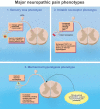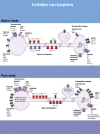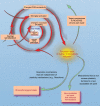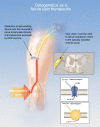From Mechanism to Cure: Renewing the Goal to Eliminate the Disease of Pain
- PMID: 29077871
- PMCID: PMC6084577
- DOI: 10.1093/pm/pnx108
From Mechanism to Cure: Renewing the Goal to Eliminate the Disease of Pain
Abstract
Objective: Persistent pain causes untold misery worldwide and is a leading cause of disability. Despite its astonishing prevalence, pain is undertreated, at least in part because existing therapeutics are ineffective or cause intolerable side effects. In this review, we cover new findings about the neurobiology of pain and argue that all but the most transient forms of pain needed to avoid tissue damage should be approached as a disease where a cure can be the goal of all treatment plans, even if attaining this goal is not yet always possible.
Design: We reviewed the literature to highlight recent advances in the area of the neurobiology of pain.
Results: We discuss barriers that are currently hindering the achievement of this goal, as well as the development of new therapeutic strategies. We also discuss innovations in the field that are creating new opportunities to treat and even reverse persistent pain, some of which are in late-phase clinical trials.
Conclusion: We conclude that the confluence of new basic science discoveries and development of new technologies are creating a path toward pain therapeutics that should offer significant hope of a cure for patients and practitioners alike. Classification of Evidence. Our review points to new areas of inquiry for the pain field to advance the goal of developing new therapeutics to treat chronic pain.
Figures





References
-
- Committee on Advancing Pain Research, Care, and Education. Relieving Pain in America: A Blueprint for Transforming Prevention, Care, Education, and Research. Washington, DC: Institute of Medicine of the National Academies; 2011. - PubMed
-
- Rudd RA, Aleshire N, Zibbell JE, Gladden RM.. Increases in drug and opioid overdose deaths—United States, 2000–2014. MMWR Morb Mortal Wkly Rep 2016;64:1378–82. - PubMed
-
- Volkow ND. America’s addiction to opioids: Heroin and prescription drug abuse. 2014. Available at: http://www.drugabuse.gov/National Institutes of Health (accessed September 30, 2017).
Publication types
MeSH terms
Grants and funding
LinkOut - more resources
Full Text Sources
Other Literature Sources
Medical

